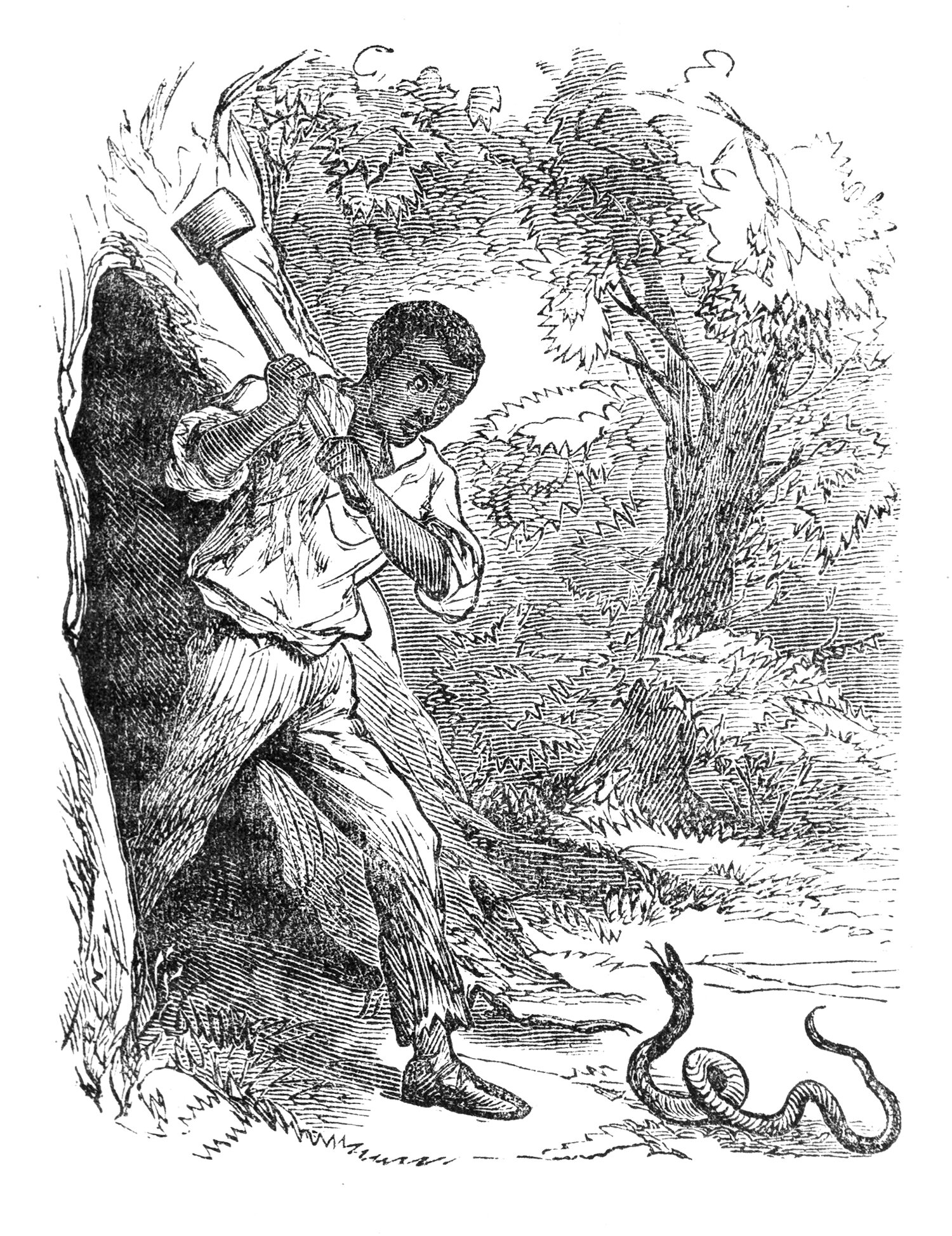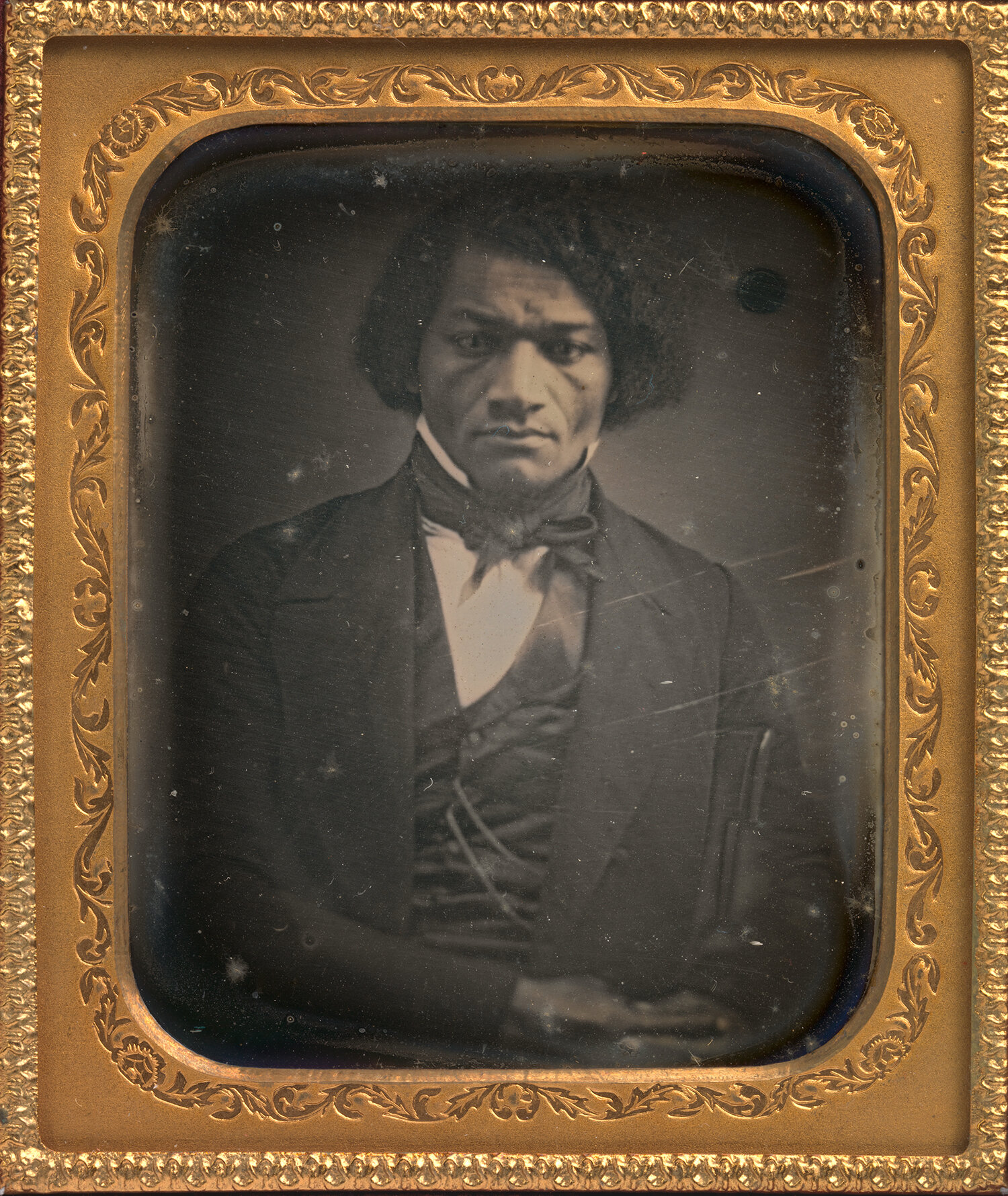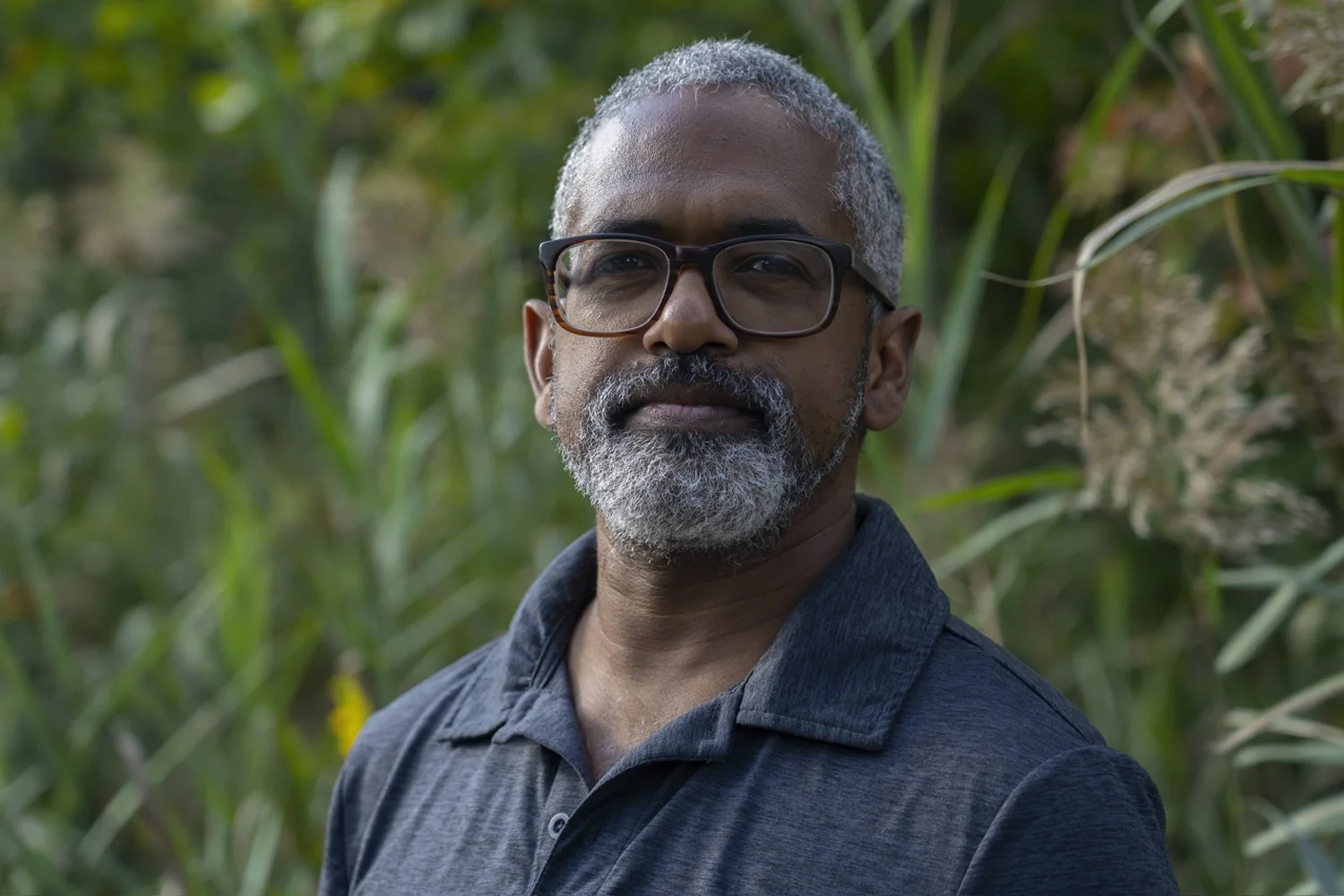
Travel through Adkins Arboretum with historian Anthony Cohen to understand how self-liberators used their knowledge of the natural landscape to forge a path to freedom.
Their methods for navigating, concealing themselves, finding food, and evading capture reflect a deep connection to, and understanding of, nature. Filmed over the course of a year, this guided experience explores Adkins Arboretum on Maryland’s Eastern Shore through the seasons and brings history alive in the landscape you see today.
The history of slavery in America is a complex subject, and this guided experience focuses on a single element—nature’s role in the search for freedom. We invite you to continue your own journey of discovery by exploring the additional resources (Further Explorations) provided in each chapter.

1.
Where History & Nature Meet
Explore a landscape that has been shaped by and still bears witness to history.
Situated on Maryland’s Eastern Shore, Adkins Arboretum is home to more than 600 varieties of plants native to the mid-Atlantic coastal plain. The Arboretum plays an important role in protecting the ecological health of the Chesapeake Bay region by preserving and restoring native flora.
Through this work, the Arboretum also becomes a valuable asset for students of history. Although there are no documented reports of Underground Railroad activity on the land now occupied by the Arboretum, the restored landscape looks somewhat like it would have when many self-liberators were making their journeys through the region. Two of the most well-known are Harriet Tubman and Frederick Douglass—who were born on, and escaped to freedom from the Eastern Shore.
> Harriet Tubman, pictured seated, c. 1868. Benjamin F. Powelson. Image courtesy Library of Congress Prints & Photographs Division, Library of Congress, LC-DIG-ppmsca-54230
> Frederick Douglass, pictured seated, c. 1864. B.F. Smith & Son. Image courtesy Library of Congress Prints & Photographs Division, Library of Congress, LC-DIG-ppmsca-69250.
> The Arboretum is situated on the Eastern Shore of Maryland, north of the birthplace of Frederick Douglass and west of routes Harriet Tubman used for escapes. Map adapted from resources included in Bound For the Promised Land by Kate Clifford Larson, and Young Frederick Douglass, The Maryland Years by Dickson J. Preston.
The Arboretum is located in the traditional homeland of the Choptank People, Algonquin-speaking Woodland Indians who lived along the Choptank River basin. Before European settlers arrived in the early 1600s, there were approximately 20,000 Choptank living on the Eastern Shore. Less than 150 years later, they were driven to near-extinction by illness, fighting, and forced migration. During the 1700s and 1800s—the time leading up to and concurrent with the Underground Railroad—it was home to planters, Quakers, free Blacks, and enslaved people.
A closer look at today’s landscape reveals some differences. Then, much of the land was being cleared for farming (growing crops and grazing livestock). The remaining forests would have been older than what you see today, and were being selectively cut for timber. Read more about the history of the land that is now Adkins Arboretum.
Further Explorations
At the Arboretum
Learn more about the plant species featured in this chapter and where to find them at the Arboretum.
What’s in Bloom?
Monthly illustrated guides to plants you will find in bloom or plants with special seasonal interest at the Arboretum.
Living Collections Database
Database and web mapping platform that provides extensive information about the plants found at the Arboretum. Clicking on the name of a species listed in any “At the Arboretum” section of this website will take you to that entry in the database. Note: this database is in the process of being transitioned to a more user-friendly interface. Thanks for your patience!
American Beech
A large beech tree overlooks Tuckahoe Creek on the Creekside Trail (near the bench). Need some help with identification? Watch this Introduction to American Beech video.
Pine | Loblolly Virginia
You’ll find both loblolly and Virginia pines on the Upland Walk and on Nancy’s Meadow Loop.
Sweetgum
You’ll find a large sweetgum in the picnic area off the South Meadow Loop between the Visitor’s Center and the Pavilion.
Tulip Tree (also Tulip Poplar)
The Arboretum is home to many tulip trees. While exploring Blockston Branch Walk, you’ll come to a deck beside a large specimen.
White Oak
Take a stroll along the Upland Walk to find one of the oldest white oaks at the Arboretum. Need help with identification? Watch this Introduction to White Oak video.
Beyond the Arboretum
Discover more about the lives of freedom seekers through their stories and related Network to Freedom sites.
PEOPLE
Read about Harriet Tubman
Harriet, the Moses of Her People
Scenes in the Life of Harriet Tubman
William Still's The Underground Railroad
Read about Frederick Douglass
Narrative of the Life of Frederick Douglass, an American Slave
My Bondage, My Freedom
Life and Times of Frederick Douglass
PLACES
Harriet Tubman-related sites
Harriet Tubman Underground Railroad State Park (MD)
Harriet Tubman Underground Railroad Byway (MD)
Fort Hill Cemetery Burial Site (NY)
Auburn House (NY)
Frederick Douglass-related sites
National Historic Site/Cedar Hill (DC)
Banneker-Douglass Museum (MD)
President Street Station (MD)
Perryville Railroad Ferry and Station (MD)
Underground Railroad agent-related sites
Jacob & Hannah Leverton Home (MD)
Faith Community United Methodist Church (MD)

2.
Navigation
The sun and stars served as guides in direct, and indirect ways.
> Lucy Delaney recalled her mother using the North Star for direction during her escape from Missouri.
Image courtesy Schomburg Center for Research in Black Culture, Photographs and Prints Division, The New York Public Library. "Yours truly Lucy A. Delaney."
> John Brown used his knowledge of science to navigate using the moss found growing on trees.
Image courtesy Schomburg Center for Research in Black Culture, Manuscripts, Archives and Rare Books Division, The New York Public Library. "John Brown" from a collodion by J. Dudman.
Further Explorations
At the Arboretum
Learn more about the plant species featured in this chapter and where to find them at the Arboretum.
Moss
Look for moss growing on the ground as you explore the shady forest paths. You can also find moss patches on trees along South Tuckahoe Valley Trail, Ridge Walk, and Wild Thicket Walk.
> Moss on the north side of a tree grows lush and long (top), while moss on the southern side of a tree can become parched from exposure to the sun (bottom).
Beyond the Arboretum
Discover more about the lives of freedom seekers through their stories and related Network to Freedom sites.
PEOPLE
Read about
Lucy Delaney
John Brown
Read about freedom seekers who navigated using the North Star
Charles Ball
William W. Brown
David Holmes (p 295)
Issac Mason
James Watkins
PLACES
Sites that depict plantation life
Hampton National Historic Site (MD)
Sotterly Plantation (MD)
Oatlands Historic House & Gardens (VA)
Sully Historic Site (VA)
Take a hike that explores the landscape of the Underground Railroad
Woodlawn Manor (MD)

3.
Refuge & Shelter
Forests, swamps, and caves provided shelter from the elements and a safe place to hide.
> Etchings depicting Harry Grimes—who lived the the hollow of a great poplar for seven months—from William Still’s 1872 The Underground Railroad.
Images courtesy Schomburg Center for Research in Black Culture, Manuscripts, Archives and Rare Books Division, The New York Public Library. "Living in a hollow tree" and “Living in a cave.”
“One of the most telling testimonies against the pretended kindness of slaveholders, is the fact that uncounted numbers of fugitives are now inhabiting the Dismal Swamp, preferring the untamed wilderness to their cultivated homes—choosing rather to encounter hunger and thirst, and to roam with the wild beasts of the forest, running the hazard of being hunted and shot down, than to submit to the authority of kind masters.”
Refuge in the South
Some self-liberators—known as maroons—would not immediately, or ever, leave areas where slavery was upheld. This occurred throughout the Atlantic, anywhere Africans and their descendants were enslaved. In America, some maroons would form communities within the South, living for months or up to years in out-of-reach places.
Read more about what the work of one historical archaeologist has revealed about marronage in the Dismal Swamp.
> Stereoscope image of the Dismal Swamp, created by John Usher Jr. in 1885.
Image courtesy The Miriam and Ira D. Wallach Division of Art, Prints and Photographs: Photography Collection, The New York Public Library. "Vista in Dismal Swamp."
Further Explorations
At the Arboretum
Learn more about the plant species featured in this chapter and where to find them at the Arboretum.
Fallen Trees
You’ll see many fallen trees as you walk the woodland paths, with many along South Tuckahoe Valley Trail.
Tree Hollows
Enter the woodland via the bridge off South Meadow Loop, then head left after crossing the bridge. You’ll see a hollow tulip tree at the junction with Blockston Branch Walk.
Wetland/Swamp
Take Tuckahoe Creekside Walk toward South Tuckahoe Valley Trail. Before you reach South Tuckahoe Valley Trail, you’ll see a wetland/swamp area on your right.
Beyond the Arboretum
Discover more about the lives of freedom seekers through their stories and related Network to Freedom sites.
PEOPLE
Read about freedom seekers who found refuge in nature
Edinbur Randall (p 321)
Henry Cotton (p 532)
Henry Gorham (p 381)
PLACES
Sites where maroons sought safety and community
Great Dismal Swamp National Wildlife Refuge (VA)
Great Dismal Swamp (NC)
Four Holes Swamp (SC)
Angola Maroon Community (FL)

4.
Nourishment
Those who knew where to look could find food in the forest, meadow, and marsh.
> Frederick Douglass. Unidentified Artist, c. 1850 after c. 1847 daguerreotype. Image courtesy National Portrait Gallery, Smithsonian Institution, NPG.80.21
In My Bondage, My Freedom, Frederick Douglass discusses how the ‘physical comforts of life’ were not the same for everyone who lived on a plantation. Enslaved people were often not given enough food—the meat frequently tainted, and the grain of low quality. In contrast, when speaking about the table of the Lloyds, who owned the plantation where he lived as a young boy, he describes how it groaned under the weight of the numerous local and imported foods. Faced with insufficient food rations, many enslaved people turned to their knowledge of the land—foraging, fishing, trapping, and cultivating small garden patches—to provide for themselves and their families.
Read more about the intersection of race and foraging, and how one forager is helping people connect with history through wild food.
The ethnobotanical information presented throughout this project is based on historic use. Please use research and caution when considering the use of a plant.
Further Explorations
At the Arboretum
Learn more about the plant species featured in this chapter and where to observe them at the Arboretum.
Blackberry
See the blackberry thickets from the South Meadow Loop and Nancy’s Meadow Loop paths.
Paw Paw
Enter the woodland using the bridge off South Meadow Loop. Once you’re across, you’ll find a grove of paw paws where the path splits. Need help with identification? Watch this Introduction to Paw Paw video.
Persimmon
From the Visitor’s Center, take South Meadow Loop toward the woodland trails. You’ll see a grove of persimmons on your right.
Sassafras
Along South Meadow Loop, you’ll find a grove of sassafras trees past the Pavilion and near the western junction with Upland Walk.
Wild Grape
See grape vines along the wooded edges on the South Meadow Loop and Nancy’s Meadow Loop paths.
Beyond the Arboretum
Discover more about the lives of freedom seekers through their stories and related Network to Freedom sites.
PEOPLE
Read about
Charles Ball
John Brown
Moses Grandy
Henry Bibb
Andrew Jackson
Read about how meager rations were combated
(WPA) Slave Narratives: Vol. VIII: Maryland Narratives
Rev. Silas Jackson (pg 29-30)
Mary Moriah Anne Susanna James (pg 38)
James V. Deane (pg 7)
PLACES
A garden featuring plants that were familiar to enslaved people and freedom seekers
River Road African American Museum Freedom Garden (LA)
Sites that relate to the lives of self-liberators
Moses Grandy & the Dismal Swamp (NC)
Charles Ball & the War of 1812 (MD)

5.
Blending In
Wildlife presented lessons in camouflage and evasion.
> Having worked in fields, marshes, and forests, Harriet Tubman became well acquainted with the sounds of the animals around her. She later revealed that she mimicked the call of an owl to send messages to her passengers.
Harriet Tubman pictured standing, c. 1885. H. Seymour Squyer. Image courtesy National Portrait Gallery, Smithsonian Institution. NPG.2006.86. Clipping from 1899 Utica Press interview with Blandina Miller. Image courtesy Tom Tryniski/fultonhistory.com.
Uncle Louis and His Friends, the Birds
Birders develop an ear for the alarm calls that some birds give when they see a predator. Sometimes these calls can be sustained for several minutes and directed toward a specific spot. Would freedom seekers hiding in the woods have known about this phenomenon?
Consider this: Included among the WPA Volume I Alabama Narratives is an account titled ‘Psychology of a Runaway Slave’ (p. 263), which is notable for the relationship it paints between its subject, Uncle Louis, and the birds that he ‘counts as his friends’ due to the warnings they provide of approaching danger. This account is included in a then-unpublished work (Old Plantation Days) penned by a Confederate veteran, David Elred Holt, and later included in his memoir, A Mississippi Rebel in the Army of Northern Virginia: The Civil War Memoirs of Private David Holt. We have not included the full account because it is not about an escape and did not come from a former enslaved person, but it does pose interesting questions: How did this account come to be included in a collection of interviews? Are the details in Holt’s story of Uncle Louis reliable?
Further Explorations
At the Arboretum
Learn more about the animal species featured in this chapter and where to observe them at the Arboretum.
Birds of Adkins Arboretum
Field checklist of birds that have been seen or heard on the Arboretum grounds. Also check out the Arboretum eBird hotspot for recent sightings—more than 180 species have been reported.
South Meadow and Nancy’s Meadow
Good habitat for songbirds, pollinators (butterflies, bees, and other insects), deer, rabbit, fox, bald eagles, and woodpeckers (along the wooded edges).
Wetland Boardwalk and Wetland near the junction of South Meadow Loop and Upland Walk
Good habitat for songbirds, herons, ducks, frogs, toads, turtles, beaver, and insects.
Woodland Trails
Good habitat for songbirds, woodpeckers, pollinators (butterflies, bees, and other insects), deer, rabbit, fox, bald eagles, owls, wood ducks (along trails near water), toads, and turtles.
Tip: You are more likely to see wildlife closer to dusk or dawn than at other times. Move quietly and avoid traveling in large groups.
Beyond the Arboretum
Discover more about the lives of freedom seekers through their stories and related Network to Freedom sites.
PEOPLE
Read about
Andrew Jackson
Harriet Tubman
PLACES
Harriet Tubman-related sites
Harriet Tubman Underground Railroad State Park (MD)
Harriet Tubman Underground Railroad Byway (MD)
Let us know what you think about Rooted Wisdom
Your feedback will help us improve rootedwisdom.org and when developing future programming.
About | The Guided Experience
The Rooted Wisdom: Nature’s Role in the Underground Railroad Guided Experience is a film, presented in five chapters, and online companion that explore how self liberators used their knowledge of the natural landscape to forge a path to freedom. The relationship between self-liberation and nature is revealed through film, historic images and documents, detailed personal accounts, related historical sites, and resources that examine the landscape, both then and now. View the rootedwisdom.org guide for an outline of what is included. The 25-minute film is also available for community screenings, learn more.
The Location | Adkins Arboretum
A public garden and preserve devoted to native plants, Adkins Arboretum comprises 400 acres of cultivated gardens, successional meadows, pine plantations, young hardwood forests, mature bottomland forests, and wetlands on Maryland's Eastern Shore. Although there are no documented reports of Underground Railroad activity on the land now occupied by the Arboretum, the restored landscape looks somewhat like it would have when many self-liberators were making their journeys through the region. The Arboretum is a model for land conservation and provides exceptional experiences in nature while inspiring environmental stewardship, providing respite and healing, and celebrating natural and cultural diversity through the joy and wonder of the natural world. Learn More.
Inspired Beginnings
Damika Baker-Wilson is an Adkins Arboretum trustee and a native of Starr, MD. She initiated Underground Railroad programming at the Arboretum more than 15 years ago after being inspired by the landscape of the Eastern Shore and Kate Clifford Larson’s biography of Harriet Tubman, Bound for the Promised Land. As a staff member, Baker-Wilson created a rack card and webpage dedicated to the exploration of nature’s role in the Underground Railroad. Programming has since grown to include a series of in-person tours and lectures, a self-guided audio tour—and, now this guided experience.
Meet Your Guide
Anthony Cohen is a historian, author, and explorer of the American past. As founder and president of The Menare Foundation, Inc.—a nonprofit organization dedicated to the preservation of Underground Railroad history—Cohen creates vibrant immersive educational programs and trains individuals, organizations, and communities to use history as a spark for community revitalization, race dialogue and human potential.
Cohen operates Button Farm Living History Center in Germantown, Maryland. He has served as a historical consultant for documentaries, publications, community forums and school projects nationwide, and trained Oprah Winfrey for her role as Sethe in the 1998 film Beloved.
> Rooted Wisdom Premiere Panel Discussion: March 11, 2022
> Telling the Story of the Underground Railroad on the Modern Landscape
> Experiential History at Adkins Arboretum
Credits
This project was produced by Adkins Arboretum, Schoolhouse Farmhouse Studio, and historian Anthony Cohen, building upon previous programming developed by Arboretum staff and volunteers.
Music
The music featured throughout this project is from musician Joseph Kamaru/KMRU, the tracks included are: Degree of Change, Ulmma, Note 43, and Change of Degree (from the album Jar); Written by Joseph Kamaru; Performed by KMRU; Courtesy of Joseph Kamaru.
Colophon
This website is built on Squarespace. Fonts used include: Freight Text Pro and Freight Sans Pro designed by Joshua Darden and published through Phil’s Fonts. The project logotype is set in Format 1452 designed by Frank Adebiaye and available through Velvetyne Type Foundry.
Special thanks to Ginna Tiernan, Arboretum Executive Director for advancing the development of this story; Diane Miller, National Program Manager, National Underground Railroad Network to Freedom and Dr. Kate Clifford Larson, historian and Harriet Tubman scholar for source assistance; Dock Street Foundation, Mary Beth Durkin, Hugh Panero, and Stories of the Chesapeake for their generous support in promoting the project; Sylvan Kaufman, Arboretum Science Advisor, Kathy Thornton, Arboretum Land Steward, and Michael Micriotti, Arboretum Facilities Manager for site-specific expertise; Jodi Littleton, Arboretum Communications Consultant and Marta McCave and Nora Carey, Master Naturalist interns for copyediting assistance; and John Hudak, Mecca Lewis, and Ian McAllister for production assistance.
This material is based on work assisted by a grant from the Association for the Study of African American Life and History (ASALH), funded by the Department of the Interior, National Park Service. Any opinions, findings, and conclusions or recommendations expressed in this material are those of the author(s) and do not necessarily reflect the views of ASALH or the Department of the Interior.
Methodology
We began with and always returned to the natural resources at the Arboretum when researching and sourcing this project. When selecting historical accounts to include, we relied on two criteria: 1) the resource used by the freedom seeker still exists, or can be experienced, in the current landscape at the Arboretum; and 2) the account is firsthand and/or well documented (by means of an autobiography, dictated memoir/narrative, interview, letters, etc.).
Some texts used for guidance on assessing the reliability of historical accounts are included below:
John W. Blassingame, Slave Testimony: Two Centuries of Letters, Speeches, Interviews, and Autobiographies (Louisiana State University Press, 1977). P xviii
Martha Wharry Turner, Hiding, Hunting, and Habitat: An Environmental Re-analysis of the Slave Narratives (Boise State University MA History Thesis, 2012)
Jean M. Humez, Harriet Tubman: The Life and the Life Stories (The University of Wisconsin Press, 2003)
Born in Slavery: Slave Narratives from the Federal Writers' Project, 1936–1938
Sources for all historical accounts have been linked to throughout the website. A major resource for researching accounts was the collection “North American Slave Narratives” from Documenting the American South (DocSouth), sponsored by The University Library of the The University of North Carolina at Chapel Hill.
Language
Throughout this project, we use terms that more accurately describe historical power dynamics than the terms that were used in the past (e.g., “freedom seeker” instead of “runaway slave” and “enslaved person” instead of “slave”). However, terms that were used historically still appear in some accounts and document titles, and within the resources that we have included. Also, many historical accounts use dialect inconsistently and incorrectly: Read more about these usages and their impact.
> The Importance of Language in Understanding the History of the Underground Railroad

















